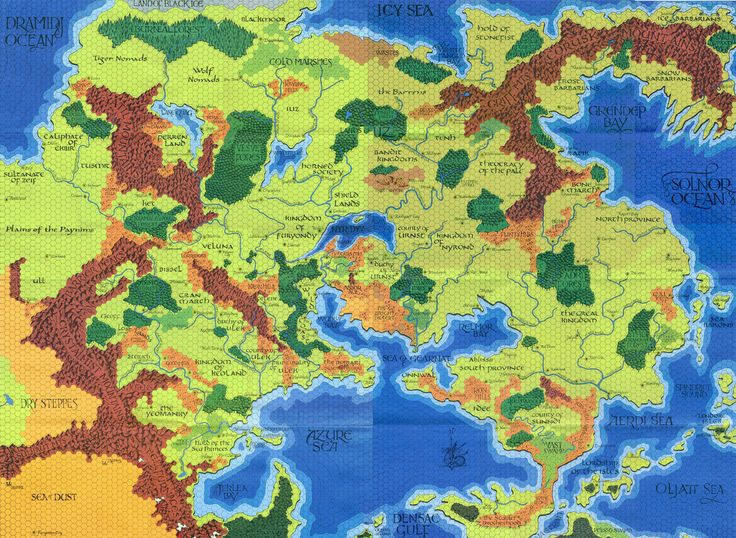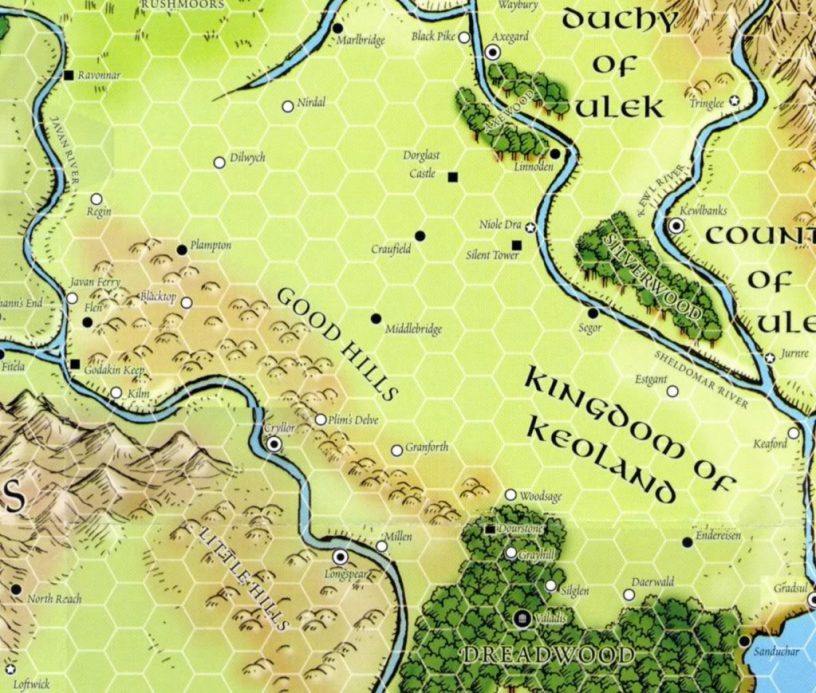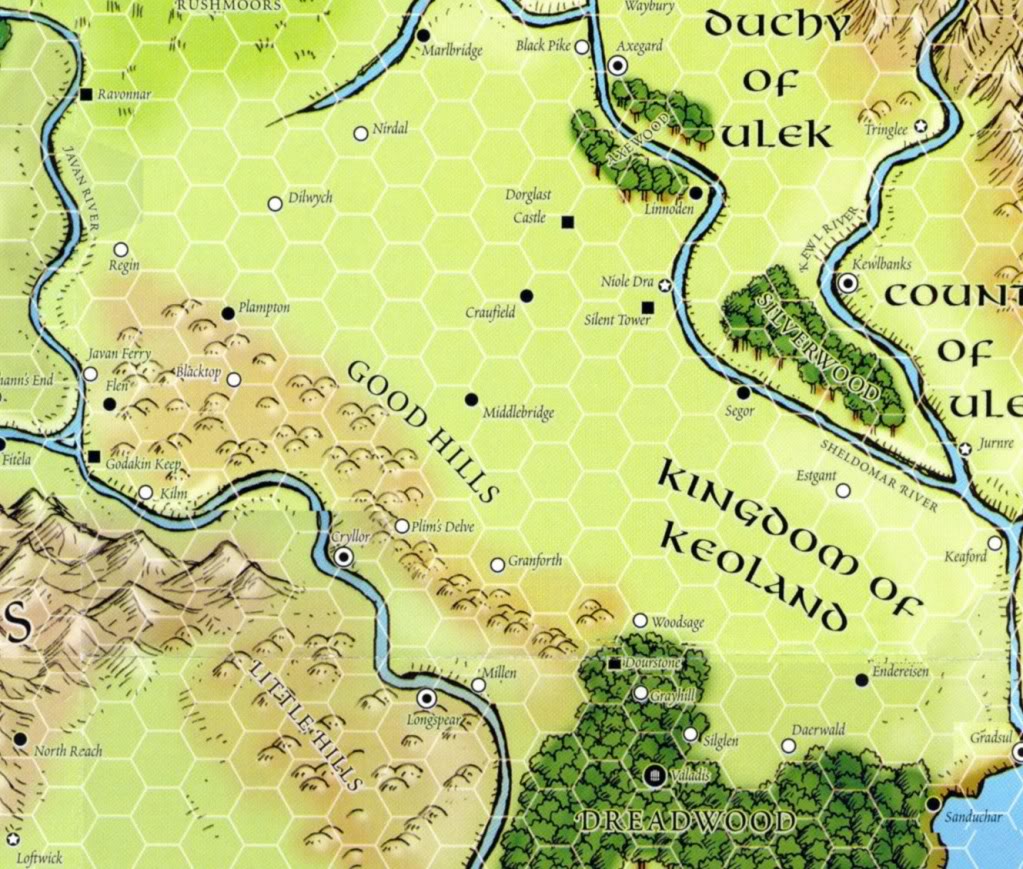Who knew that a map could stir the imagination so much? And yet the map released in the Greyhawk setting box has been the fundamental basis for my ongoing AD&D campaign. Sure, I’m taking my players through published modules–but my starting point with every game has been this map.
At first glimpse, this map by Darlene might not seem all that impressive. But then you start to look at the details. For example, what’s going on with these Bandit Kingdoms just north of the Nyr Dyv? Seems like an interesting place to visit! And what about the lands of the Snow, Frost, and Ice Barbarians in the Northeast? I mean, why can’t they just all live together? And the Sea of Dust in the Southwest is just begging for some kind of nomadic warlord!
What’s neat about the Greyhawk Fantasy Setting box is that there’s just enough details to get the creative juices flowing. Almost no areas are spelled out beyond a few simple details. It’s up to the DM and the players to evolve and create each area. In fact, that’s how I ended up making my own brief homebrew adventure for my players!
Here’s my point: I think you would benefit by choosing (or creating) a map such as this one for your starting point. There are piles of maps available out there for free and for a minimal fee. Just Google maps of the Sword Coast, the Forgotten Realms, or simply “D&D map.” You’ll be astonished how many awesome maps are out there for your use! Here’s how it’s impacting my DMing:



